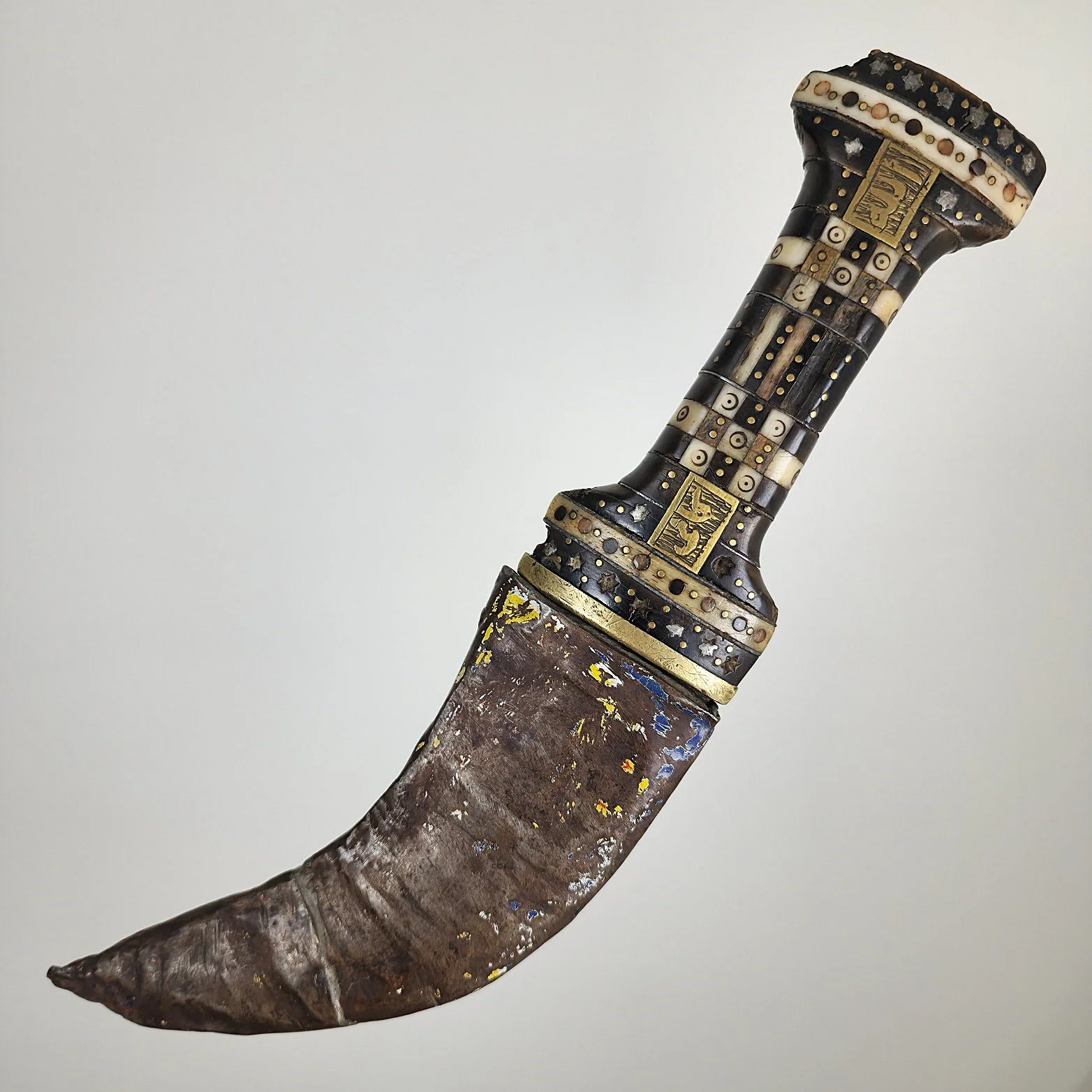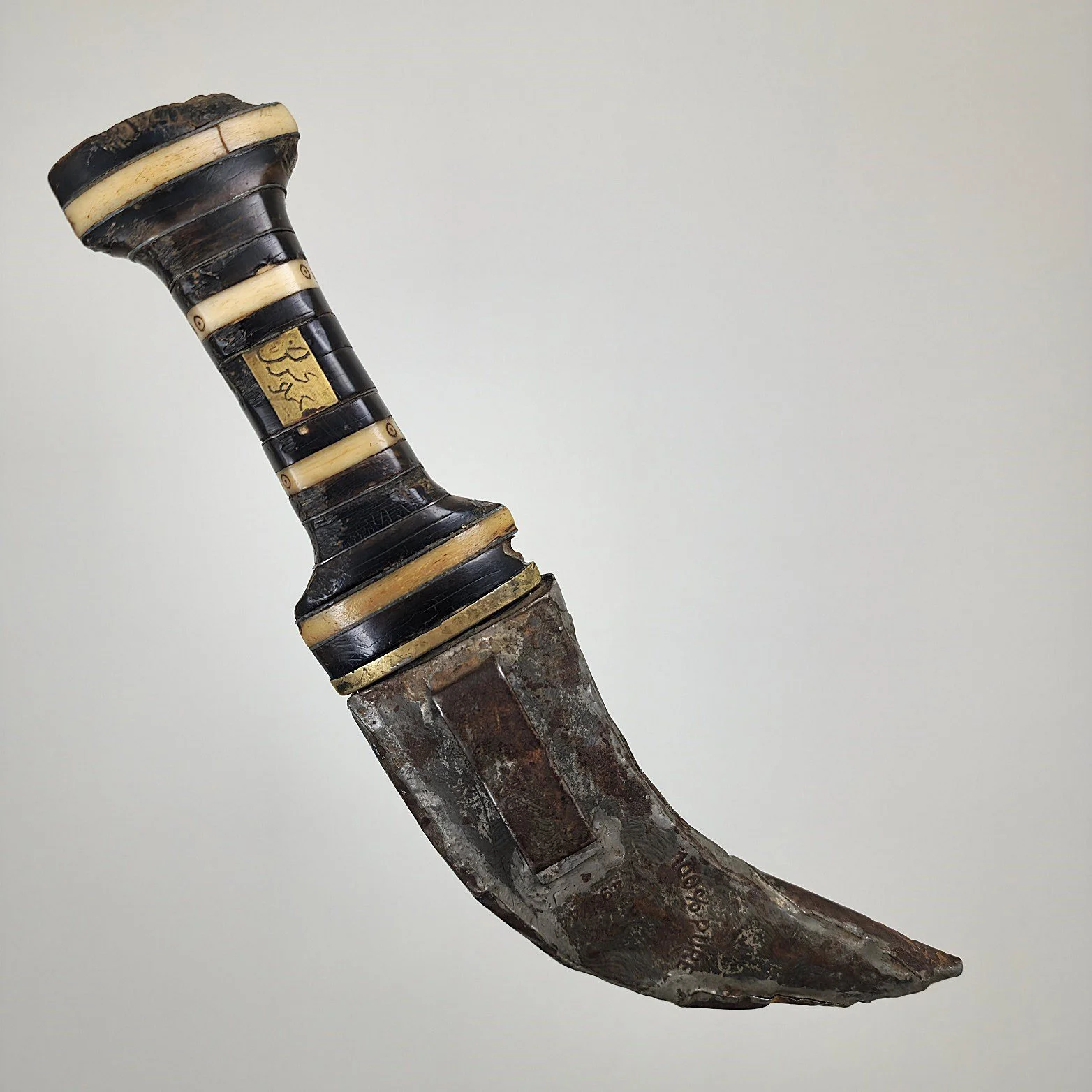Syrian Khanjar
Syrian Khanjar
Ottoman Syria (Syria)
Ca. 1900
Steel, horn, bone, brass, pewter, iron
Blade: 12,4cm
Hilt & Blade: 23,8cm
Hilt, Blade, Sheath: 24,4cm
Collection Date: 2019
Collection Number: 5
Ex. German Art Market (2019)
An early khanjar from Syria during the time of Ottoman rule. Syrian knives are known for their intricate and beautiful mosaic inlays.
The strongly curved, double- edged plain steel blade has a raised center and slight medial ridge. The hilt is carved from layered segments of brass, goat horn, and bone. Decorated with bone and horn inlaid sections of circle- dot motifs, brass nails, and pewter stars. Two brass plaques with Arabic script are present on the front side. One script of "Allah," the other, is untranslated. Another brass plaque on the reverse side in Arabic, "Work of Awadh." The sheath has a full iron exterior with a wooden interior lining, iron belt loop attached. On the reverse, "100% PURE", and "495/44" is stamped, the sheath being a secondary use of the iron. There are remnants of the colorations blue, white, yellow, and red on the sheath. Damage to the horn with some losses of the inlays. Missing the brass pommel plate. Still, a very early style of the traditional Syrian khanjar showing the old construction style before the popular use of nacre and artificial inlays.
[1] https://www.metmuseum.org/art/collection/search/31771
[2] http://www.oriental-arms.co.il/item.php?id=5015
[3] http://www.oriental-arms.co.il/item.php?id=4786







